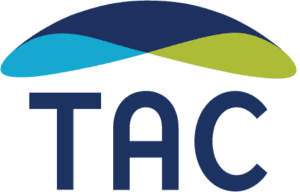A home is so much more than a house, an apartment, or a couch at a friend’s place. A home means many different things to different people. But nowhere do we see “home” more wrongfully or woefully defined than in communities struggling to recover from a disaster.
The Stafford Act, which guides federal efforts in areas where a disaster has been declared, is focused on restoring people who are “disaster impacted” to their pre-disaster living conditions. When a storm damages a homeowner’s single-family dwelling, the path forward to restore that homeowner to their pre-disaster living conditions is relatively clear. But what about the same storm’s impact on people who were living on the street, or with family or friends? It is not as obvious how to restore such people to their pre-disaster living conditions. How do we help restore their homes when so many people responding to the disaster do not understand what their situations are? And even more importantly, how do we take disaster recovery a step further and begin to create more resilient communities?
I’ve worked in disaster recovery mode in Louisiana for over ten years, and more recently in North Carolina and California as well. But it only takes responding to one disaster to learn how powerfully the lowest-income members of a community are affected. In fact, a disaster’s effect on them is likely to involve a uniquely complex set of challenges because of their greater vulnerability to what is called “indirect impact.” For example, if a disaster takes public transportation off line for an extended period, a person without alternative options for getting to work might lose their job. Without that income, a couple of months later that person might lose whatever home they had, perhaps a room they rented in a friend’s apartment. This person may now experience episodes of literal homelessness, between short stays with family and friends. This can go on for years, if — as is the case in many areas — a rental market that was tight before the disaster becomes even more challenging.
How can we help this person recover from their disaster impact and return them to their pre-disaster state? And is that even the right thing to do?
The Second Wave
Even with the help of subsidy programs, people who were already experiencing homelessness before a disaster face increased difficulties finding housing afterwards, as the housing market is overwhelmed by displaced homeowners and renters. Rental rates surge quickly after a disaster — sometimes daily — and property owners may place more restrictions on which tenants they will accept. Some evict lower-income households in favor of tenants who can afford a higher rent. Such behavior can result in a secondary wave of people experiencing homelessness after a disaster. I’ve even seen some owners rent out disaster-damaged rental units without making any repairs, forcing families without other options to live in substandard conditions while paying exorbitant rent. The post-traumatic stress caused by such situations can exacerbate health conditions, lead to depression and substance use, and increase instances of domestic violence.
(Un)fortunately, a string of major disasters in the U.S. over recent years has opened up opportunities to develop more inclusive recovery strategies. And thanks to the Department of Housing and Urban Development, and in particular its Special Needs Assistance Programs (SNAPS) office, the definition of the official term “disaster-impacted” is at last beginning to expand.
Drawing on Homeless Services Expertise
After responding to multiple disasters, I can attest that each one is unique. What is not unique, however, is that as each temporary post-disaster recovery program eventually comes to an end, it is always the most vulnerable populations that are left behind — and too often, it is only then that homeless services leaders are brought into the disaster response. This must change. Those of us in the homelessness arena understand that every day is a disaster for people experiencing homelessness, and the knowledge and skills our field can bring should inform response and recovery efforts at every stage.
It used to be that I was only ever brought in at the end of a response to help all those people whom no one else was prepared to help, or who were not considered disaster-impacted, or who were imagined to be somehow gaming the system. (If you have never been inside a disaster shelter, I can tell you that it is not a home, and not somewhere people want to be.) These days, however, I am more often tapped while response and recovery plans are still being developed, and this represents real progress. I have taught Federal Emergency Management Agency (FEMA) officials what it means to be “couch surfing.” During the Great Flood of 2016 in Louisiana, those of us with homelessness expertise were able to help both HUD and FEMA to officially recognize and define the term “precariously housed.”
Looking Beyond Recovery
By helping those with the fewest resources to become more resilient, a community itself becomes stronger, too — and better prepared for overall disaster recovery. Strategies to support this goal include the development of mixed income rental housing with dedicated units for permanent supportive housing and for extremely low-income households; flexible rapid rehousing programs that provide case management services even after rental assistance ends; supportive services for persons with disabilities; and job creation for low- and moderate-income community members.
Disasters are awful tragedies for communities. However, Louisiana’s disaster-born permanent supportive housing program is a hallmark of recovery from hurricanes Katrina and Rita. You don’t have to go through a hurricane to create a permanent supportive housing program like Louisiana did. But if your community does experience a disaster that triggers an allocation of Community Development Block Grants for Disaster Recovery or other resources, then use that infusion to the best advantage! These resources can allow communities to rebuild beyond simply restoring pre-disaster conditions.
Until it is recognized that all of us are disaster-impacted just by virtue of living in a disaster-impacted area, there will be no equity in recovery efforts. We must think first of those who were already most vulnerable, and find ways not just to return them to their pre-disaster state, but to create more resilient people and communities.
Resource
- HUD’s Disaster Recovery Homelessness Toolkit includes information and resources for local planning, immediate response, and disaster recovery.
- Learn about TAC’s technical assistance services in disaster preparedness and recovery.



